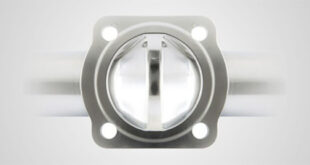Predictions have shown that if our current trend of energy sourcing and usage continues for the next 5,000 years, sea levels will rise by 216 feet. London will no longer exist. Neither will Bangladesh, Florida, or much of China. Jonathan Wilkins explains how industrial plants can maximise the energy efficiency of their equipment
On a global scale, businesses and individuals have taken actions to combat global warming. Examples include switching to renewable power, recycling regularly and cycle to work schemes.
However, there is now a greater incentive for businesses to adopt such initiatives.
Regulations state that from April 2018, all non-domestic privately rented properties must have an energy performance certificate (EPC) rating of at least an E. EPC ratings range from A at best, to G at worst, and summarise the property’s energy efficiency.
They are determined following an inspection of the property.
The factors inspected include CO2 emissions, fuel costs per year, and energy performance related features such as walls, windows and heating systems. To comply with this regulation, industrial plant managers must take measures to maximise the energy efficiency of their equipment.
Insulation
For equipment that requires heating, insulation is especially important. This is because the greater the amount of heat loss, the more energy that is needed to replace it.
Moreover, equipment with higher internal temperatures generates a greater temperature gradient between the internal and external environments. This culminates in a greater rate of heat loss.
Regulations require residential properties to have between 350 and 500 millimetres of insulation. Surprisingly, power plants are only required to have 100 millimetres of insulation, despite having considerably greater heat losses. It may be argued this is insufficient.
Submetering
Using submetering, it is possible to measure the energy used by individual buildings, devices or departments. This provides tenants with actual usage data rather than estimations. They can use this data to identify sources of wasted energy, and optimise their energy efficiency.
Another advantage is that each tenant is only billed on the amount of energy they use, which eliminates tension between co-tenants. Energy suppliers often implement peak demand management, whereby they charge extra per kilowatt-hour (kWh) of energy at the time when consumption is highest.
The aim is to avoid failing to meet demand by discouraging businesses from maximum consumption at this time. Industrial plant managers can use data from submetering to save money by minimising their energy usage at peak demand times.
Variable speed drives (VSDs)
Most electric motors run at maximum speed and the output is controlled by altering the fuel flow. This is highly inefficient and is one of the reasons why electric motors account for 43-45% of all global electricity consumption.
By replacing their electric motors with VSDs, industrial plants will waste less energy. This is because the output of VSDs is controlled externally by altering the power input. Industrial plant managers must play their part in saving the planet by adopting initiatives to optimise their energy efficiency.
Jonathan Wilkins is marketing director of obsolete industrial automation parts supplier, EU Automation.
 Engineer News Network The ultimate online news and information resource for today’s engineer
Engineer News Network The ultimate online news and information resource for today’s engineer



